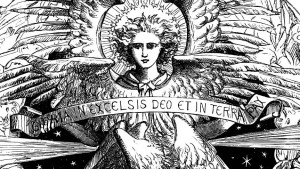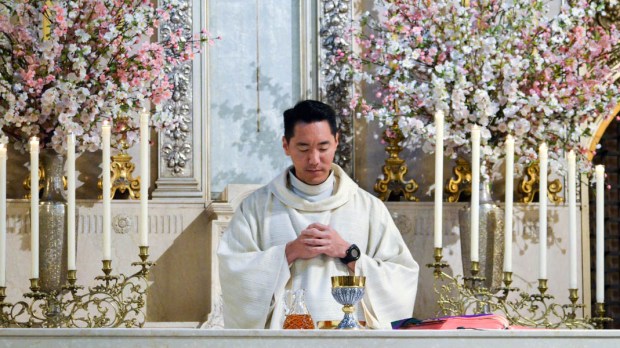When a priest chooses Eucharistic Prayer I (also known as the “Roman Canon“), he has the option of reciting a short list of saints before and after saying the sacred words of consecration. It is an ancient list, one that has changed little throughout the centuries.
The first list highlights the Blessed Virgin Mary, Saint Joseph, the 12 apostles and 12 other saints of the early Church. Then after the consecration, the priest will recite another list of 15 saints, including 7 women.
Who are these women that the Church chose to mention in the Mass, which is often called the “the source and summit of the Christian life”?
St. Felicity – A young and pregnant slave girl of the 2nd century, Felicity was persecuted by the Romans for her Christian faith and sentenced to death with St. Perpetua in the amphitheater at the public games.
St. Perpetua – Perpetua was a noblewoman of Carthage and was thrown into the same prison as Felicity for refusing to deny her Christian faith. She chronicled her experience in a diary up until the day of her death. This account was highly popular for many centuries after her death.
St. Agatha (of Sicily) – A young girl who chose Jesus for her spouse at a young age, Agatha was accused of being Christian in the 3rd century and put into prison. She survived several rounds of torture until she finally died. She was highly venerated in the Early Church and her intercession was believed to have protected an Italian city from a volcano one year after her death.
St. Lucy – Born in the 3rd century, at an early age Lucy dedicated her virginity to Christ, but her mother was not aware of it and arranged to have her married. Lucy refused on account of her private vow and the man she was supposed to marry turned her in on account of being a Christian. This led to a gruesome martyrdom, where her eyes were gouged out prior to being killed. Devotion to her spread rapidly throughout Europe, particularly in Scandinavia.
St. Agnes (of Rome)– Agnes was the daughter of wealthy and distinguished parents in Rome during the 4th century. She also dedicated herself to God and refused to marry. At 12 years of age she was put to death for her refusal and for being a Christian. Her name means “lamb” and annually on her feast a pair of lambs are blessed by the pope, and their wool is shorn on Holy Thursday to create the pallium that a new metropolitan archbishop wears over his shoulders.

Read more:
What is the white scarf that some bishops wear?
St. Cecilia – Similar to Agnes, Lucy and Agatha, Cecilia was a noble maiden of the 2nd century who dedicated her virginity to God. She was forced to marry but protected by a guardian angel, who helped preserve her purity. Eventually she was put to death for her Christian faith and is popularly known as the patron saint of music for her musical skills. It is also said that she frequently heard melodies from Heaven.
St. Anastasia – A Roman widow of the 4th century, after her husband’s death she dedicated her life to acts of charity and the practice of her Christian faith. During the persecution of Diocletian she was killed for her beliefs. Her feast was originally placed on December 25 and it was customary to commemorate her in a small way each Christmas.
Read more:
Power in the Church? Women Have Always Had It

Read more:
How someone’s poem became the greatest hymn of the Mass

